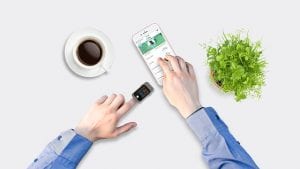Three Ways Technology is Improving Your Healthcare
 The World Health Organization (WHO) defines health technology as “the application of organized knowledge and skills in the form of devices, medicines, vaccines, procedures and systems developed to solve a health problem and improve quality of lives.”
The World Health Organization (WHO) defines health technology as “the application of organized knowledge and skills in the form of devices, medicines, vaccines, procedures and systems developed to solve a health problem and improve quality of lives.”
We live in an era where technology touches our lives almost everywhere, but in terms of healthcare, we have more access than ever to our healthcare providers and tools to guide our personal health strategy. For example, mobile apps give us access to price comparisons for prescription medicines. Fitness devices and apps can give us feedback on physical activity, sleep and hydration, and we can chat and email with our physicians. Let’s look at a few ways that technology has positively affected healthcare.
Telemedicine refers to conversations with a healthcare professional via computer, phone, or another device. It allows long distance patient/doctor contact and care, advice, reminders, education, intervention, monitoring. and remote admissions.
There are two great reasons telemedicine is becoming more popular and successful. First, in rural areas where access to hospitals and other health related services are lacking, patients can use their computer to meet virtually with a doctor. Second, the cost benefits associated with telemedicine could be substantial.
Electronic health records (EHR) The movement toward electronic health records is an important evolution in the medical field, and one that can facilitate advances in medical diagnostics and treatment. HealthIT.gov identifies a number of benefits to using EHR, including:
- Providing accurate, up-to-date, and complete information about patients at the point of care
- Enabling quick access to patient records for more coordinated, efficient care
- Securely sharing information with patients and other clinicians
- Helping providers more effectively diagnose patients, reduce medical errors, and provide safer care
- Reducing costs through decreased paperwork, improved safety, reduced duplication of testing, and improved health.
Wearable technology When patients monitor their health at home, they can save money and reduce unnecessary visits to the doctor’s office. At the end of 2012, almost 3 million patients worldwide were using home health monitoring systems.
Wearable Technology collects data that helps doctors and patients alike monitor and assess the health of the wearer. Apple now offers apps that will allow its Series 4 watches to perform electrocardiogram readings, or ECGs, and notify users of irregular heart rhythms. Other devices can monitor blood sugar or blood pressure. The FreeStyle Libre Flash Glucose Monitoring System, approved in 2017 by the Food and Drug Administration, uses a small sensor attached to the upper arm. Patients wave a reader device over it to see the current blood sugar level and changes over the past eight hours.
In addition to devices that alert medical teams about serious medical issues, there are very popular wearable devices that are allowing users to take an active role in their health. Wearable fitness trackers such as Fitbit, Apple, Garmn and Jawbone, have become wildly capable. Once confined to measuring steps and active minutes, devices now sport features like sleep-tracking and 24/7 heart rate monitoring.








